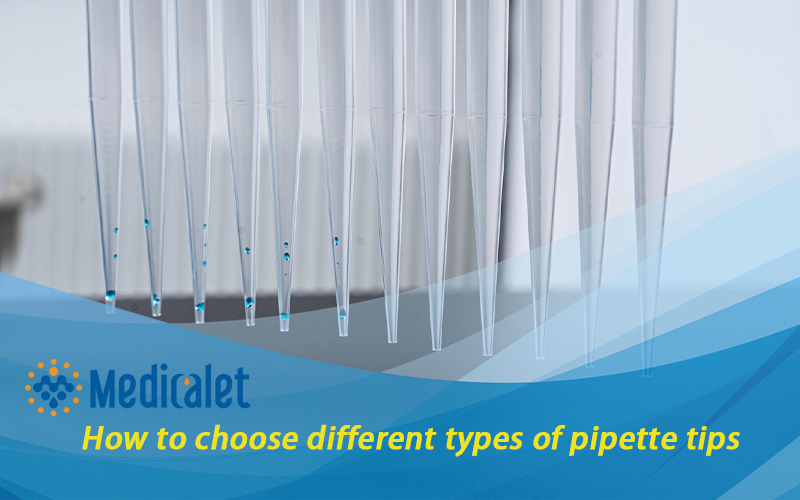
1 Different types of pipette tips
Non-sterile, sterile, filtered, unfiltered, long, short, low retention, wide bore – the variety of tips available can be overwhelming.
1.1 Non-sterile vs. sterile
It's common sense that sterile tips should be used for applications where sterility is important. You need to make sure that the manufacturer declares them as autoclavable, and be aware of the following:
Lack of quality control
Tip manufacturers validate their sterilization process, and perform regular quality checks. In contrast, individual labs don't usually test the effectiveness of their autoclaving process, which can lead to contaminated samples.
Autoclaved tips aren't free of RNase and DNase
Tips you’ve autoclaved yourself are sterile, which means that they are free from living organisms, but not necessarily from RNase and DNase. If you need to perform sensitive assays where this is required, you should opt for sterile tips from a manufacturer who can certify that their tips are free of RNase and DNase.
1.2 Filter tips
Every time you aspirate liquid, aerosols are generated inside the pipette tip. If you don't use filter tips, these aerosols may contaminate your pipette and, consequently, your next samples – even if you change tips in between.
For example, when performing PCR applications, the cross-contamination of samples by aerosols in the pipette could lead to false positive results, as even the smallest quantities of DNA from a previous sample could be amplified. It's particularly important to use filter tips when handling liquids that could damage your pipette, such as radio-labeled or corrosive samples, for both your own safety and lifetime of your pipette.
Here's a list of liquids that should always be pipetted with filter tips, as they could either contaminate or damage your pipette:
RNA/DNA solutions
Infectious samples
Radio-labeled samples
Volatile, corrosive or viscous samples
Strong acids or bases
And last but not least, filter tips can be useful for training new lab staff. Spending extra money on filter tips until your colleagues get used to your instruments is a good idea that usually pays for itself, as you can avoid pipette contamination or damage from liquid entering the lower end of the pipette.
1.3 Long tips
Have you ever risked cross contamination by putting the shaft of your pipette into a tube for a standard tip to reach the bottom? To eliminate this risk, you can choose extended length pipette tips suitable for labware such as microcentrifuge tubes or deep well blocks.
1.4 Short tips
Short tips offer two advantages. First, they support the targeting of small wells, e.g. when manually pipetting into a 384 or 1536 well plate with a multichannel pipette. And second, they offer improved ergonomics by allowing you to pipette closer to the bench, reducing the strain on your arm.
1.5 Low retention tips
As the name suggests, low retention tips retain less liquid, providing more accurate and consistent results while saving precious reagents. However, they are more costly than standard tips, so you should know exactly when it is worth using them. Our in-house application scientist demonstrated, in a series of tests, that both standard and low retention tips provide ideal liquid recovery when pipetting water, but produce significantly different results when viscous or low surface tension solutions are handled.1 Therefore, low retention tips are ideal when pipetting highly concentrated, and consequently viscous, samples during:
PCR, cloning, sequencing or other DNA and RNA applications
SDS-PAGE, protein purification or other protein analysis applications
1.6 Wide bore tips
Fragile cellular samples can get damaged when they are forced through the narrow orifice of standard tips. Therefore, you should use wide bore tips when transferring cellular samples, such as fragile cell lines, or other viscous materials. The wider orifice of these tips prevents (cell) shearing and reduces flow resistance.
Why tip quality and fit are crucial
Low quality or poorly fitting tips can negatively impact the reproducibility of your results. This means that you will need to repeat experiments, wasting valuable time and money. On top of that, repeating experiments means even more pipetting, which increases the strain on your arm, wrist and fingers – especially if you use poorly fitting tips that require high attachment and ejection forces – and can ultimately lead to repetitive strain injuries.
How to assess tip quality
The first factor influencing the quality of tips is the polypropylene blend. High quality tips are made from virgin polypropylene, which is free from plastic and/or metal additives that could contaminate your samples. Checking that a manufacturer doesn't use metal additives is especially important when buying colored tips, as metal additives can often be found in dyes.
The second factor influencing quality is the injection molding machine. The slightest batch-to-batch or within batch variations – such as differences in straightness, molding flash or streaking – negatively impact the accuracy and precision of your results. These irregularities often can't be seen by the naked eye, so it is better to avoid buying the cheapest tips on the market, to reduce the risk of inaccurate and imprecise results.

Years of experience in manufacturing laboratory consumables and medical products enables Medicalet to provide products of the highest quality and competitiveness. Through continuous innovation and practice, Medicalet has been recognized by more and more customers. If you are interested in Medicalet pipette tips, please feel free to contact us!
